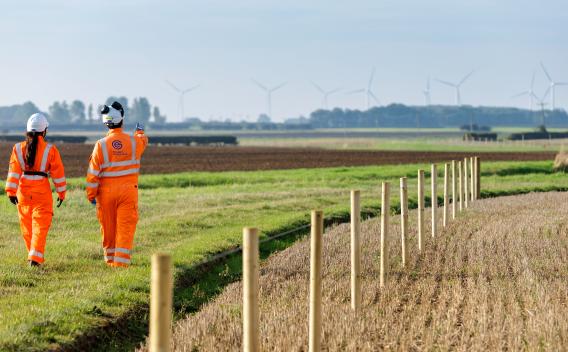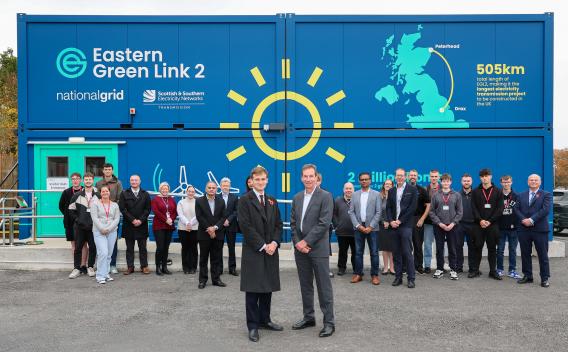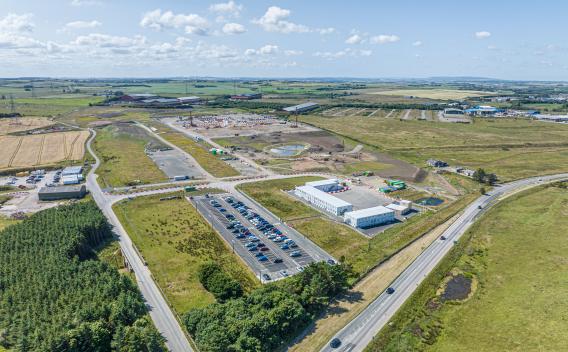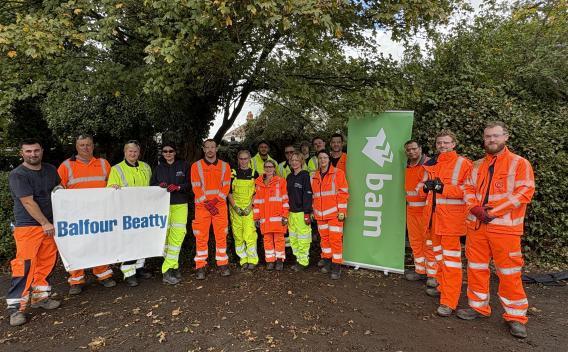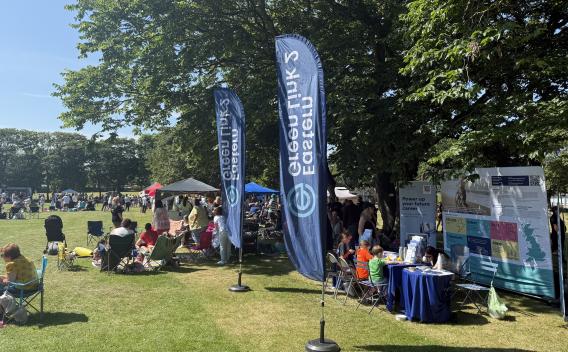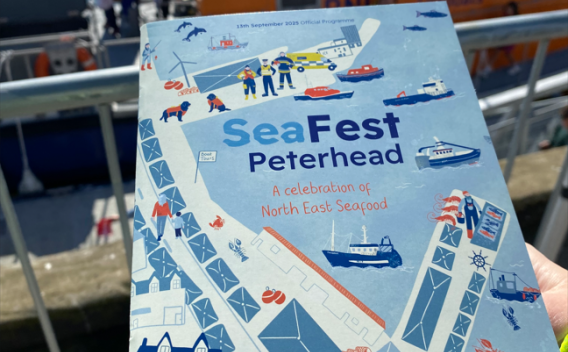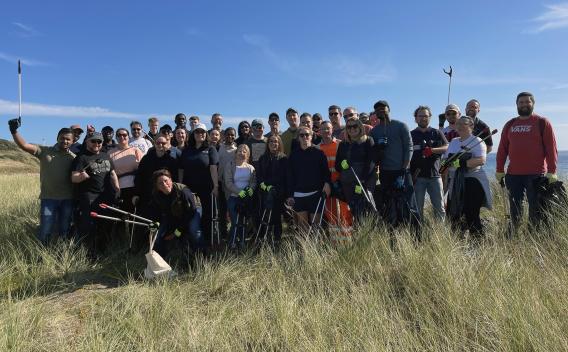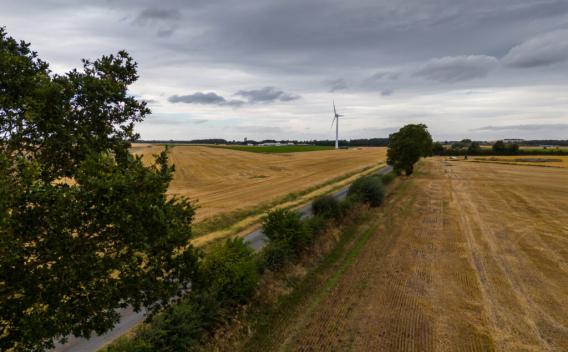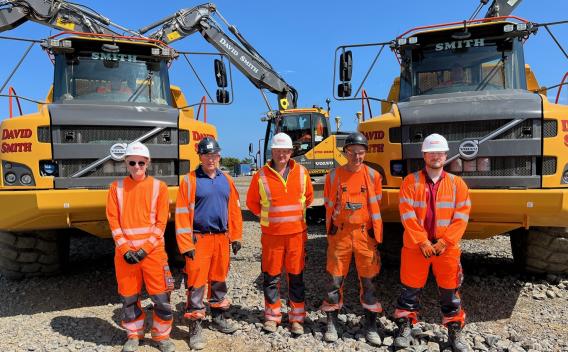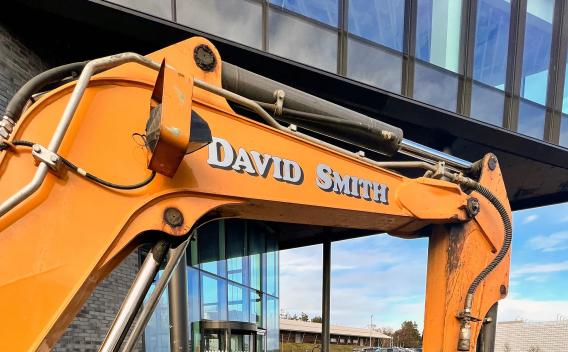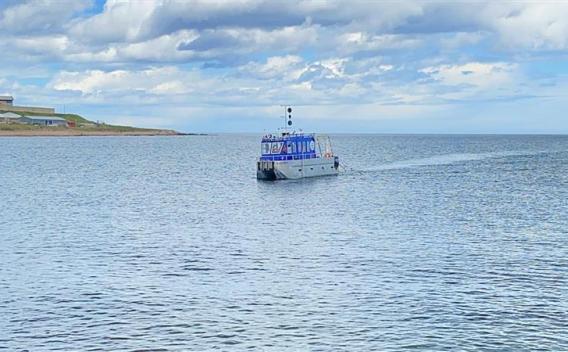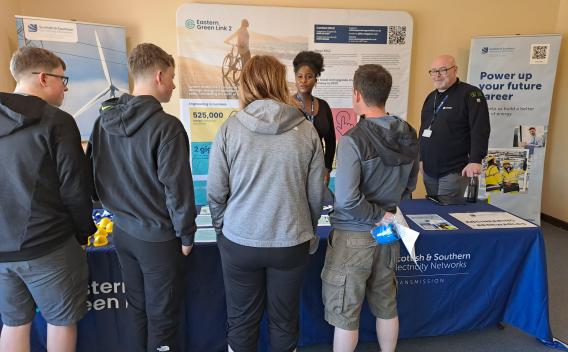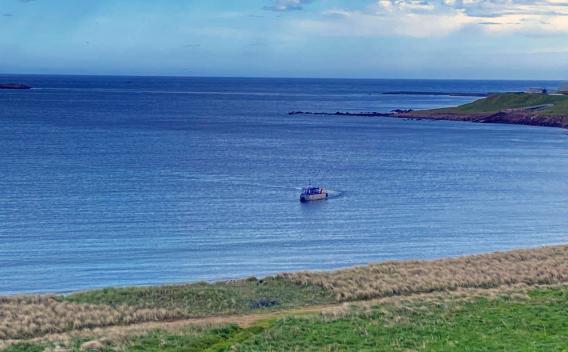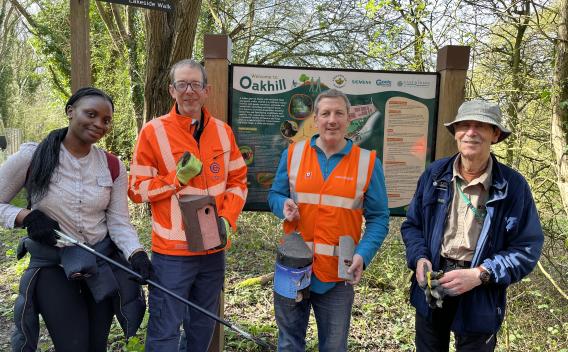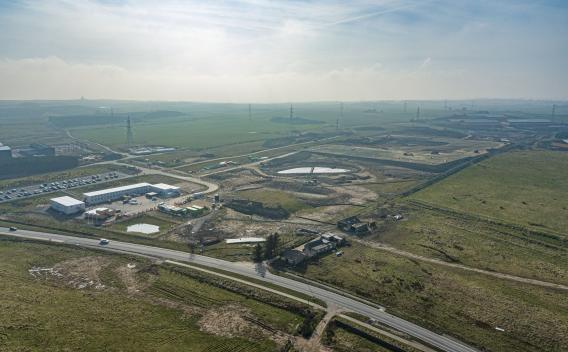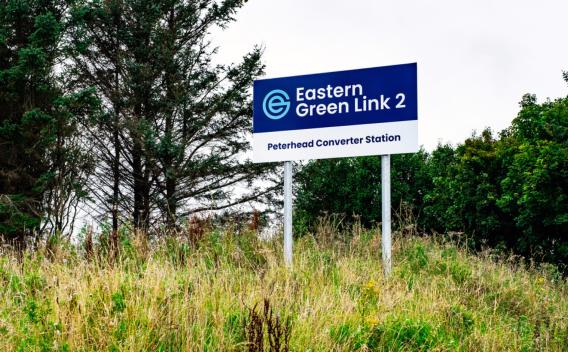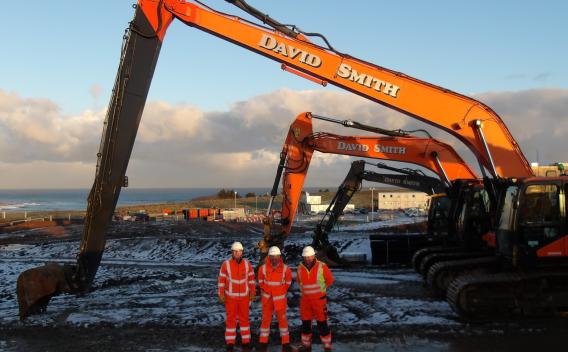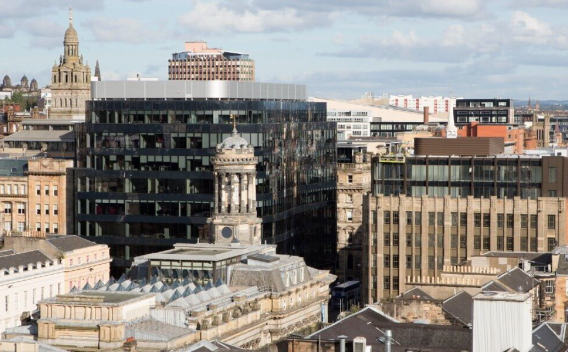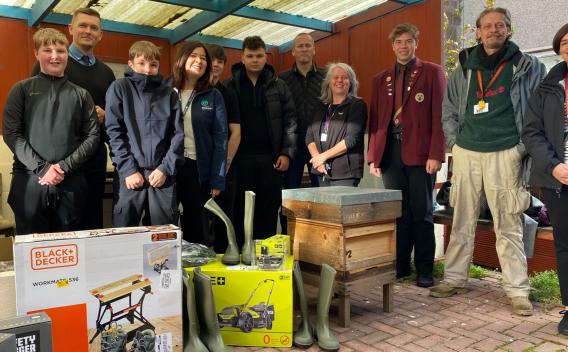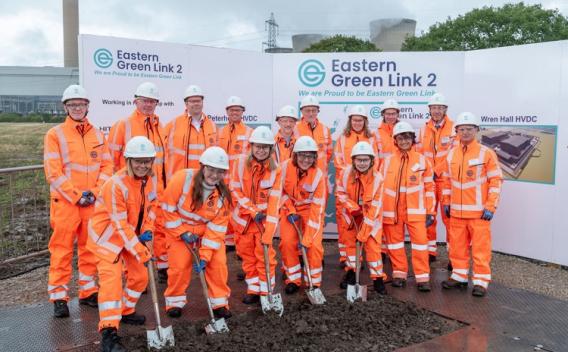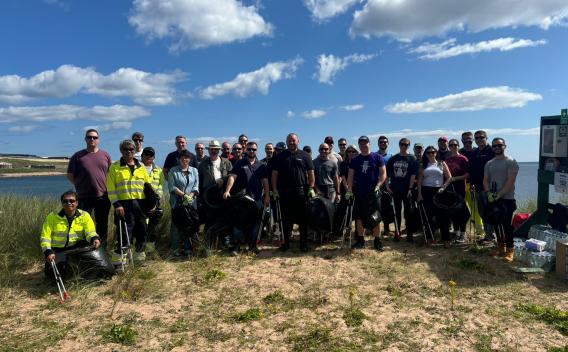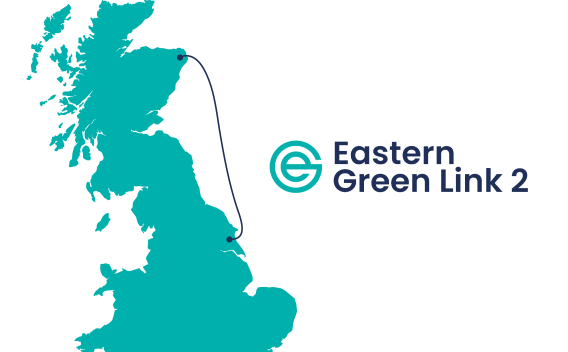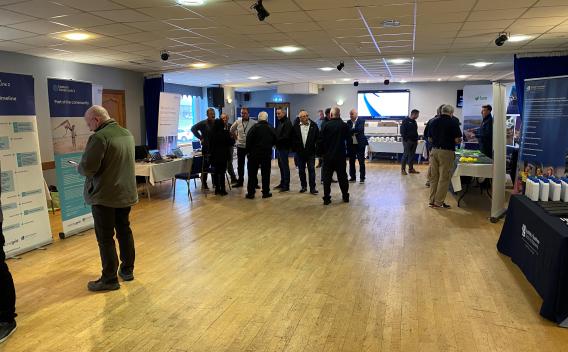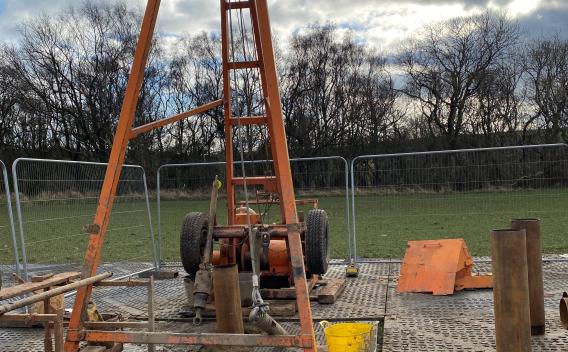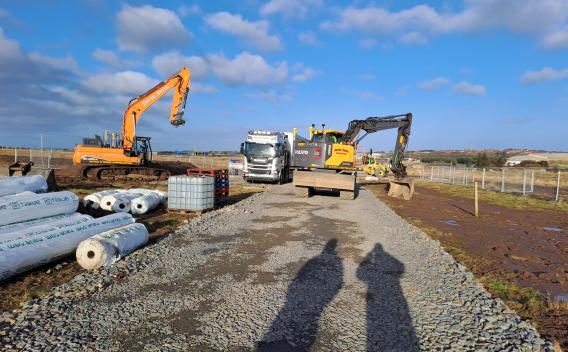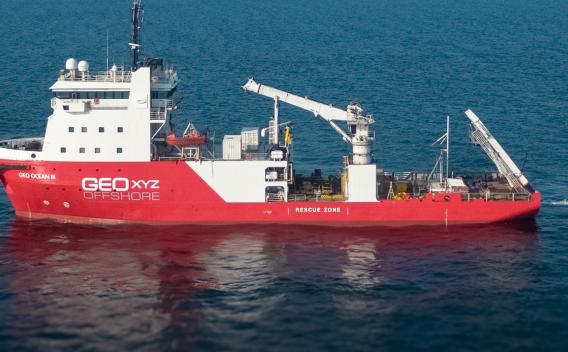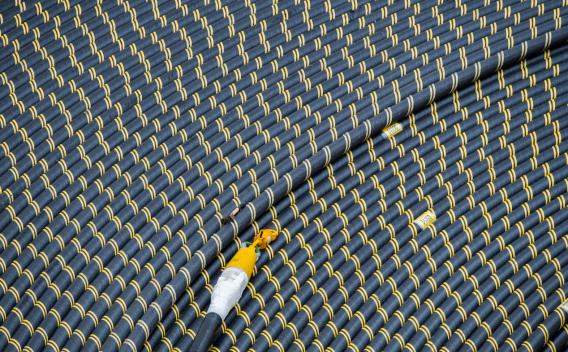EGL2 - A year of delivery on the UK’s biggest electricity transmission project
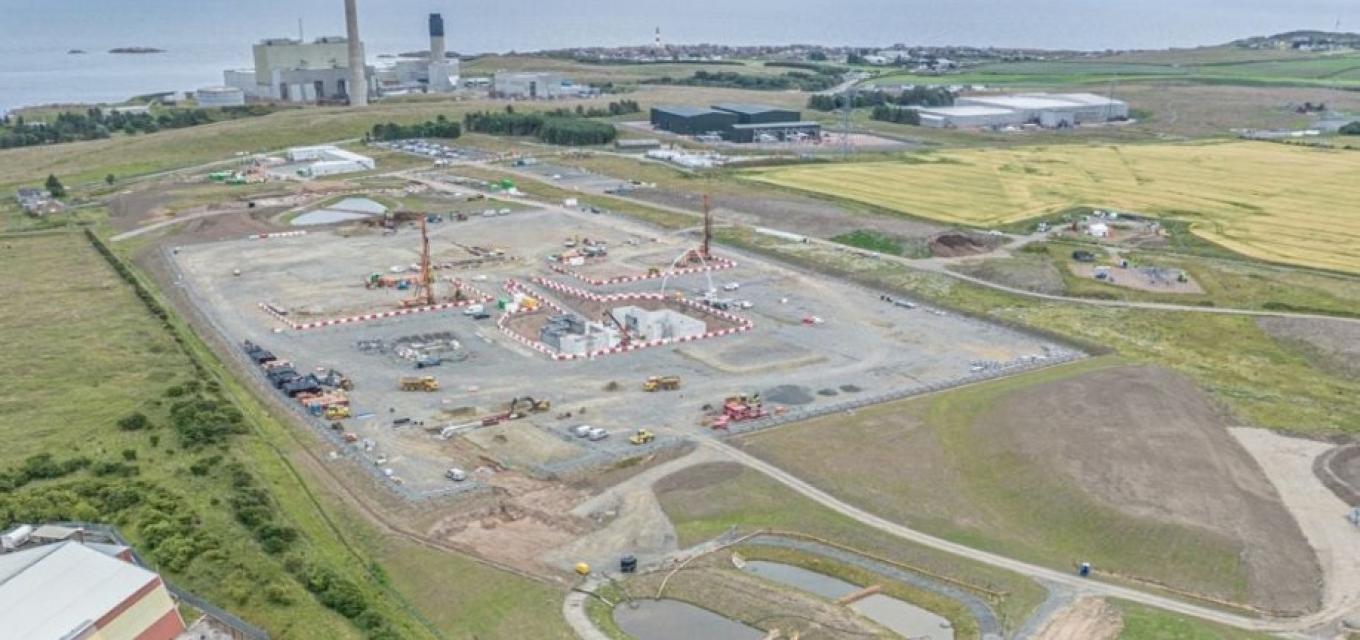
Today marks a major milestone for the UK’s energy future as SSEN Transmission and National Grid Electricity Transmission celebrate one year since breaking ground on Eastern Green Link 2 (EGL2), the country’s largest-ever electricity transmission project.
Launched with a simultaneous groundbreaking ceremony at either end of the link last September, EGL2 is an ambitious £4.3bn project that will carry 2GW of clean energy – enough to power up to two million homes – through the UK’s longest subsea HVDC cable. Running 505km between Peterhead in Aberdeenshire and Drax in Yorkshire, the project will see the creation of a new “electricity superhighway,” helping the UK move towards a secure, clean energy system.
Over the past 12 months, the project has moved from plans and designs into visible progress on the ground in both Aberdeenshire and Yorkshire. At Peterhead, the converter station site has been transformed since contractors BAM began work. The site’s vast platform was completed earlier this year, and welfare facilities are now in place to support a growing workforce. June saw the pouring of reinforced concrete foundations and the start of piling for the transformer buildings, while drainage ponds and earth mounds are nearing completion, ready to be complemented by native landscaping.
In Yorkshire, the HVDC converter station at Wren Hall, Drax, has also taken shape. Site mobilisation began at the same time as Peterhead, with welfare cabins and a canteen completed in the spring, already serving fresh, locally sourced food to workers. Earthworks are progressing at pace, creating a four-metre-high platform that will provide the base for the station and a planned Biodiversity Net Gain area. Piling began in the spring, alongside complex electrical works, including works to the existing 400kV substation and the diversion of an existing 132kV overhead line. Additionally, this summer saw the start of the construction enabling works for the 68km onshore underground cable in the East Riding of Yorkshire.
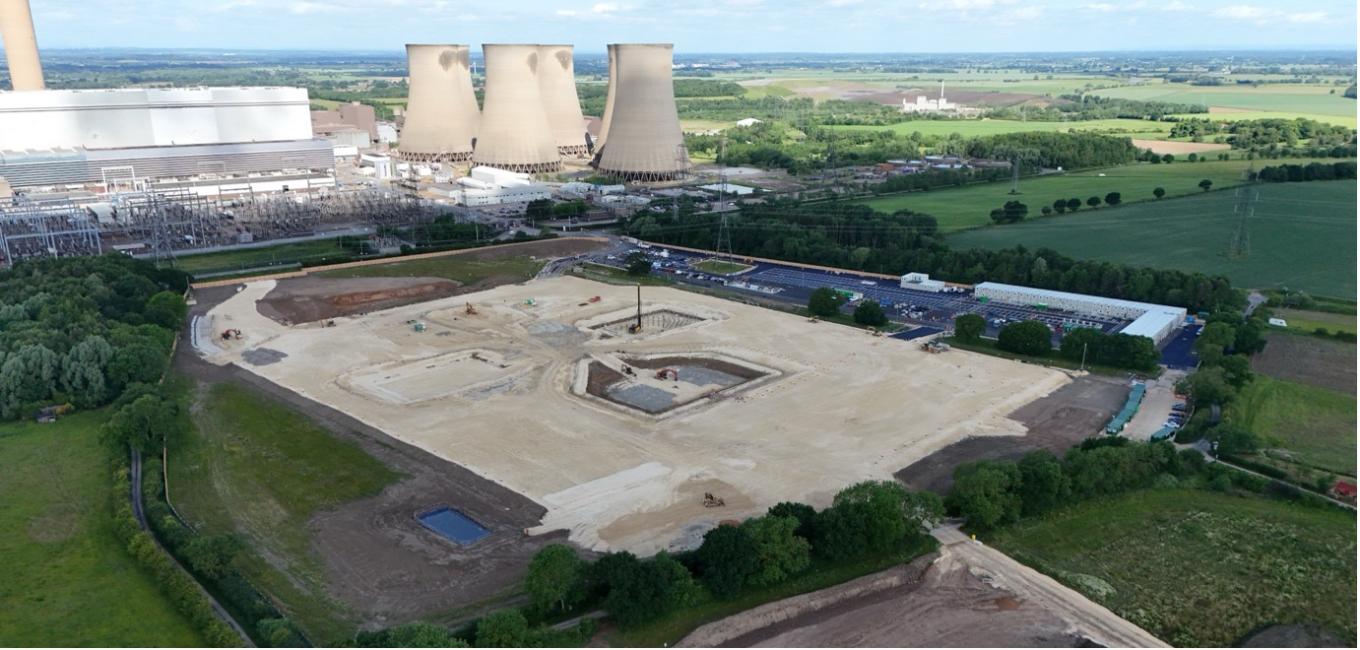
Image: progress made at the Wren Hall site in Yorkshire
Beyond the delivery of physical infrastructure, the project has also made significant strides in the last year on sustainability and community engagement. The plant equipment at both construction sites is powered in part using Hydrotreated Vegetable Oil (HVO), helping to reduce emissions. A £2m Community Benefit Fund launched earlier this year in Peterhead too, and is already supporting local initiatives, with a similar fund to be launched in the Yorkshire shortly. Alongside this has been a series of school and community volunteering initiatives. The project’s commitment to leaving a positive legacy along its route is clear.
When it comes to cable works, in a major milestone, trial trenching work has been carried out and completed at 261 locations on the Southern section of the cable route – with work on mitigation on any findings underway and progressing into 2026.
Horizontal Directional Drilling (HDD) works are moving ahead in partnership with Prysmian. With onshore surveys now complete, preparatory activities are underway to enable works to begin at Sandford Bay in October.
Unexploded Ordnance (UXO) surveys - safety checks that scan the seabed for old military munitions, ensuring offshore construction can proceed safely – are being carried out across the project. In the south, the survey carried out by GeoXYZ has concluded, with the results helping to inform the precise development of the project’s subsea cable route.
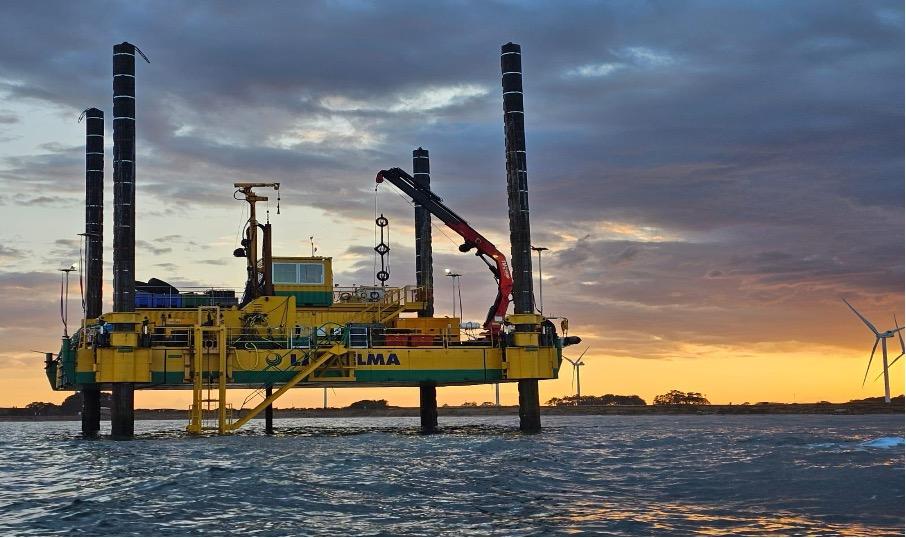
Image: Geotechnical Works taking place in Bridlington
In Peterhead, offshore UXO target surveying is underway too. Work began August, is progressing southward and is expected to be completed by the end of 2025. Importantly, no significant findings have been reported so far.
And earlier this year, construction of the Monna Lisa – the cable laying vessel that will install the cable that connects Peterhead and Drax – was completed. The new vessel, which has been described as Prysmian’s most advanced, is already showing its capability, laying cable offshore in the US. Prysmian have also completed their extension of the Pikkala plant, in Finland, where the vast majority of the subsea cable for EGL2 will be manufactured and stored before its installation.
Looking ahead, the next 12 months will see the continuation of steelwork rising from the ground at Peterhead, the completion of the Wren Hall platform, and the continued build-out of the electrical connections that will tie EGL2 into the wider electricity grid – all to be followed by cable laying in 2027 and 2028 as the sites gear up to be physically connected.
By the time the project is fully energised, it will play a central role in unlocking the country’s vast renewable energy resources and delivering them to homes and businesses.
Marking the one-year anniversary of construction, EGL2’s Project Director, Fionán Doonan, said:
Reaching the one-year mark on construction of EGL2 is a real milestone for everyone involved in the project. When we broke ground last September, we set out with a clear ambition: to deliver one of the most important pieces of national infrastructure in a generation.
A year on, we can already see the scale of that ambition taking shape, with foundations now in place at both converter station sites and teams across Scotland and England working tirelessly to make progress on this colossal project. What is particularly pleasing for me, however, is the way that we have embedded sustainability and community engagement into the heart of construction from day one.
As we look ahead, the next twelve months promise to be even more exciting, with work continuing at pace. EGL2 is about much more than building infrastructure – it’s about building a cleaner, more secure energy system for the future, and it’s inspiring to see that future becoming a reality.
Deputy Project Director, Neil Lyons, added:
The first year of EGL2 has been all about laying strong foundations – both literally and figuratively – for what will become a transformative project for the UK’s energy system.
We’ve seen tremendous progress on the ground, from completing the main site platforms at Peterhead and Wren Hall to moving forward with piling and early electrical works at the converter stations. These achievements are the result of close collaboration between our teams, contractors and local communities, and I’d like to pay tribute to the skill and dedication of everyone involved.
Our focus now shifts to the next stage of construction, as EGL2 really begins to take shape. It’s an exciting time for the project and for everyone playing a part in delivering it.
One year in, Eastern Green Link 2 is no longer just lines on a drawing board – it’s steel rising from the ground, cables being prepared beneath land and sea, and communities already feeling the benefit. Each milestone achieved signals more than progress on a project; it signals that the UK can deliver the infrastructure needed for a secure, net zero future.
Momentum builds trust — with communities, with regulators, with investors, and with the next wave of clean energy projects waiting for connection. And as EGL2 continues to gather pace, it is proving that ambition can be turned into action, and action into impact.




